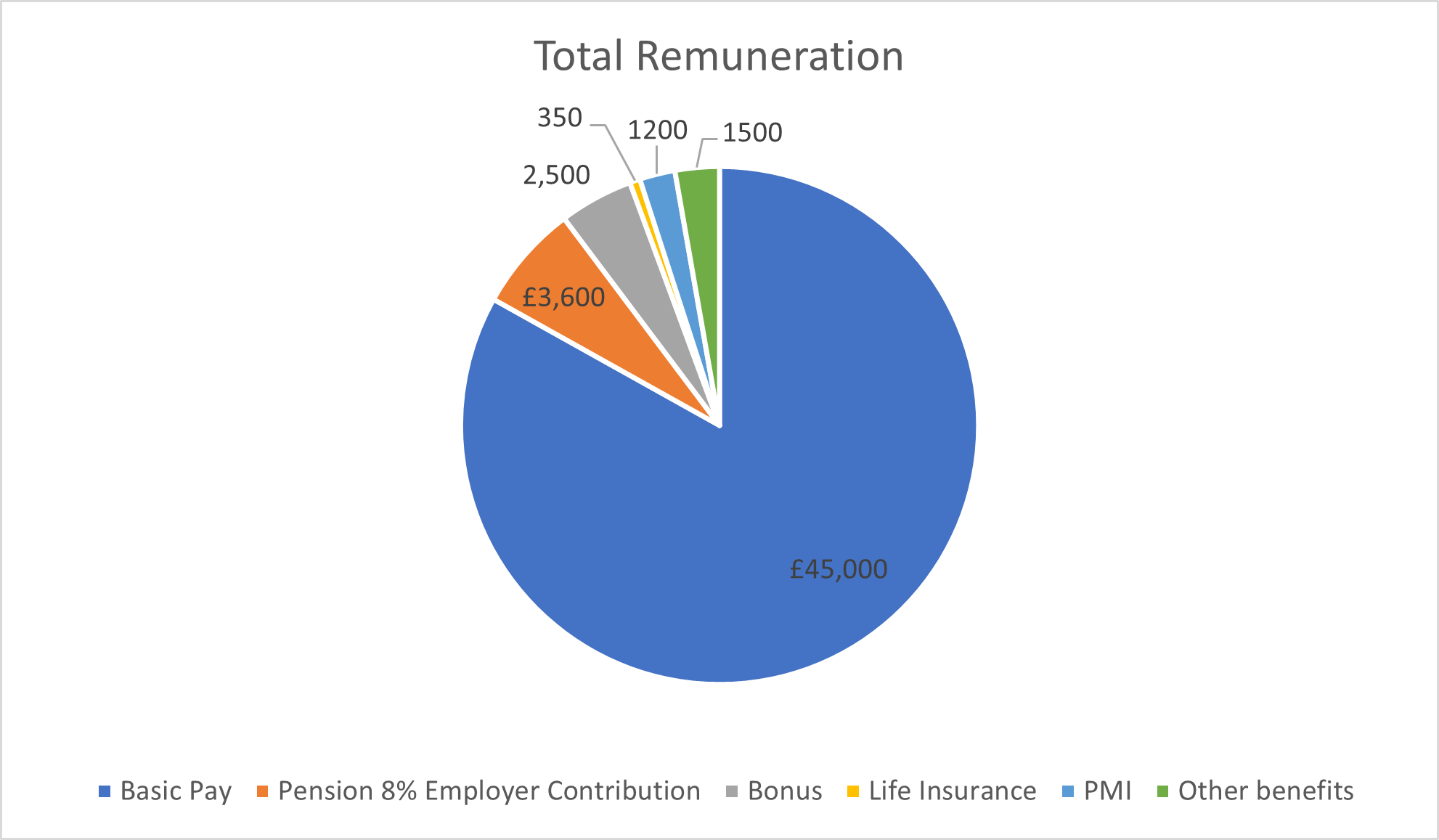One of the biggest challenges for employers and HR teams at present is how to retain staff. Whilst recruitment is also challenging, having effective strategies in place to improve retention can in themselves ease the pressure on overheated recruitment markets. And it makes good sense – retaining good quality staff that have already been trained and know all about your business is far cheaper than recruiting in and training up.
Whilst there is no ‘one-size-fits-all’ answer to improving retention, we have set out below a few tried and tested strategies that you could think about applying in your business.
1) Ensure your staff understand their remuneration.
One of the biggest mistakes employees can make when considering leaving their employer is comparing basic salaries between their current job, and a new option. Whilst basic salary is completely relevant, it’s only part of the picture. Businesses that are great at staff retention are normally also great at communication around total reward, or total remuneration. Basically, showcasing total remuneration, where basic pay is set alongside the value of all of their other benefit and package components, allows employees to understand the true total value of their role. That often means that a competitor offering a basic pay boost alone might well not stand scrutiny if the wider employee benefit package is considered.

Having this sort of information available to staff in the form of a Total Reward Statement can also help in recruitment too – a simple but incredibly effective strategy to deploy.
2) Listen to staff.
When was the last time you carried out genuine and in-depth engagement with your employees to find out what they wanted? If the answer is ‘never’, you’re definitely missing more than a trick, and may be spending money on things that your staff do not value, while failing to recognise and provide things that they do. If you survey and engage periodically, but haven’t done so for a year or two, you might want to expedite your usual timeframes. The world is always changing, but in our current post-pandemic, hybrid-working, cost-of-living challenged, inflation-threatened state, there is more change than ever before. This is likely to have impacted on what your staff want, expect, and need from you as their employer. HR teams that are taking this seriously are carrying out supplemental exercises on top or instead of their usual survey tools, focussing down on game-changer issues like wellbeing, financial resilience, and career satisfaction. Staff that feel listened to tend to feel valued; and staff that feel valued are far less likely to leave.
3) Connect the dots.
If you are still looking at each of your decisions around pay, and each of your selections and reviews in terms of employee benefits separately – your strategy needs an overhaul. None of these standalone elements makes or breaks and employee decision to stay or leave, it’s the sum of the parts that forms the conclusion. Revamp your approach by creating an Employee Value Proposition (EVP) which pulls together all of the elements around your pay, reward, and culture. Define clearly what kind of employer you are, what your internal ‘brand’ is, and how you want staff to feel about working for your organisation. You’ll uncover significant efficiencies by tying things neatly together and making your benefits and reward coherent and logical for staff. By ensuring managers and leaders are well trained and vested in a clear culture, many of the familiar niggles that tend to only come to light in exit interviews can be uncovered much quicker – and resolved.
4) Walk the walk.
If you’re good at finding out about what staff want, but not great at following up and delivering, or not open to changing your approach, you can find that staff get disillusioned and lose patience, eventually jumping ship. Make sure you approach engagement exercises authentically, with a project team with bandwidth, budget, and scope ready to implement sensible suggestions. Without this in place, even with good intentions timeframes can drift amongst the myriad of other business challenges, and your original positive start can turn into a negative from an employee perception standpoint. You should also make sure that your leadership and management teams are engaged and enthused – do they know what you need to achieve and why, so that they can help you reach staff?
5) Understand your demographics.
For some businesses retention has become a challenge across the board, which in some ways is a simpler problem to address – and to get business buy-in to focus upon. But many businesses that have retention problems find that when they look at their employee demographics, their challenges are most acute in specific areas, or for specific employee groups. The key strategy you need to deploy here is analysis and refinement. In terms of analysis, make sure you know exactly who you’re struggling with – is it a particular office or location for example, where a new local competitor is making waves, or are you struggling to retain younger talent, often losing them a couple of years after they are skilled and trained? By understanding clearly where your problems lie, you can refine your EVP to help address them. For example, you could do more work on mapping out career paths for junior staff or bolstering your traditional employee benefit package with things like access to tech and wearables, which might feel more exciting to a ‘pre-family responsibilities’ cohort.
If you would like to talk about which strategies are likely to be most effective for your business, our Broadstone consultants are able to consult with you to understand your unique challenges and formulate bespoke action plans to transform your employee retention. Contact us for a no obligation discussion.




